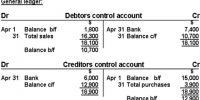Activity ratios indicate the performance of the business. The performance of a business is judged by its sales (turnover) or cost of goods sold. These ratios are thus referred to as turnover ratios. A few important activity ratios are discussed below:
- Capital turnover ratio
- Fixed assets turnover ratio
- Stock turnover ratio
- Debtors turnover ratio
- Creditors turnover ratio
Capital Turnover Ratio
This shows the number of times the capital has been rotated in the process of carrying on business. Efficient utilization of capital would lead to higher profitability. The relationship between Sales and Capital employed is known as Capital Turnover Ratio. The ratio is calculated as:
Capital Turnover Ratio = Sales / Capital Employed
Where Sales means Sales fewer sales returns and Capital employed refers to total long-term funds of the business concern i.e., Equity share capital, Preference share capital, Reserves and surplus and long-term borrowed funds.
Fixed Assets Turnover Ratio
This shows how best the fixed assets are being utilized in the business concern. The relationship between Sales and Fixed assets is known as Fixed assets turnover ratio. The ratio is calculated as:
Fixed assets turnover Ratio = Sales / Fixed assets
A fixed asset means Fixed assets less depreciation.
Stock Turnover Ratio
This ratio is otherwise called as inventory turnover ratio. It indicates whether the stock has been efficiently used or not. It establishes a relationship between the cost of goods sold during a particular period and the average amount of stock in the concern. The ratio is calculated as:
Stock turnover ratio = Cost of goods sold/Average stock
Average stock = (Opening stock + closing stock) / 2
If information to calculate average stock is not given then closing stock may be taken as average stock.
Debtors Turnover Ratio
This establishes the relationship between credit sales and average accounts receivable. Debtors turnover ratio indicates the efficiency of the business concern towards the collection of the amount due from debtors. The ratio is calculated as:
Debtors Turnover Ratio = Credit Sales/Average Accounts Receivable
In case credit sales are not given, total sales can be taken as credit sales.
Creditors Turnover Ratio:
This establishes the relationship between credit purchases and average accounts payable. Creditors turnover ratio indicates the period in which the payments are made to creditors. The ratio is calculated as:
Creditors turnover ratio = Credit Purchases/Average Accounts payable
In case credit purchases are not given total purchases can be taken as credit purchases.















